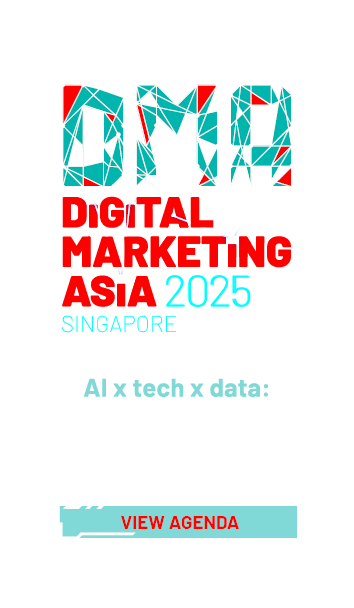



What led to the PR debacle around Nike's Olympics campaign?
share on
Nike’s latest Olympics campaign has caused a fair bit of chatter online, after one of its shots featuring a Chinese athlete licking her table tennis paddle ignited widespread outrage across China.
Media intelligence firm CARMA observed over 3,000 mentions on social media since Nike’s advert came out on 19 July, with the majority of mentions coming from Weibo. Of these mentions, 62% were negative, and 18% were positive.
Don't miss: Nike ad featuring athlete licking table tennis paddle sparks outrage in China
Most netizens found the advert disgusting, particularly due to the angle at which it was shot. Many noted that while they have seen athletes kissing the paddle as a form of self-encouragement before a match, they were puzzled by the focus on an athlete licking the edge of the paddle, as they had never seen such an act in any past table tennis tournament, said Charles Cheung, HK GM, Carma.
In response, Nike’s official customer service told media such as Global Times that it will provide feedback on the matter, but it cannot give a definitive answer on the issue for now.
MARKETING-INTERACTIVE has reached out to Nike for a statement.
Building awareness
Whether the licking gesture is authentic or scripted, the specific paddle licking shot should not go live in a campaign that was created for commercial purpose, said Celine Cheung, account director, RSVP Communications.
"When an international brand crafts a campaign, they need to take every regions' cultural sensitivity very seriously. If Nike feels pressured upon the boycott from Chinese netizens, I hope they can better improve on this aspect," she added.
In fact, Nike isn’t the first international brand to face backlash for culturally insensitive ads. Back in 2022, a video ad of luxury brand Chanel drew mixed reactions from Chinese netizens, with many questioning if the Asian model was chosen to belittle Chinese citizens.
Don't miss: Chanel global ad with Asian model sees Chinese netizens split on Asian beauty ideals
In 2018, Dolce & Gabbana released videos on Weibo of an Asian woman struggling to eat Italian food with chopsticks, accompanied by a mocking voiceover. The content was deemed racist and stereotypical, sparking outrage in China.
Similarly, Nike's incident underscores the importance of cultural awareness and contextual interpretation, according to Brian Yeung, co-founder, Brianstorm Content & Brandstorm Communications.
“For multinational companies, it is crucial to conduct focus groups with key stakeholders from different markets to test the waters before launching an ad campaign,” he added.
On the other hand, David Ko, managing director, RFI Asia, said the authenticity of the shot is somewhat beside the point - what matters is its effectiveness in grabbing attention and sparking discussion, said David Ko, managing director, RFI Asia.
“In that sense, Nike has succeeded spectacularly. The ad has generated significant buzz and media coverage, keeping the brand at the forefront of people's minds during the Olympics,” he said.
Globally, CARMA observed over 15,000 mentions regarding Nike's campaign since its release on 19 July. Out of those mentions, 56% are positive, while 1.9% are negative.
Many netizens have shared their own experiences and perspectives on winning and losing, with some arguing that winning isn't everything and that it's okay to lose sometimes, said Charles Cheung, HK GM, CARMA. “Others have highlighted the potential risks of promoting an overly competitive mindset without balance,” he added.
A touch of authenticity or lack of cultural sensitivity?
While cultural sensitivities are important to consider, this controversy may actually reinforce Nike's image as a bold, unapologetic brand willing to take creative risks.
Moreover, the campaign challenges conventional portrayals of athletes, showing them in unexpected, even quirky moments, RFI Asia’s Ko said.
“This approach humanises elite athletes and potentially makes them more relatable to viewers. It's a risky but potentially rewarding strategy that sets Nike apart from more traditional sports advertising.”
Despite the specific paddle licking shot being perceived as a little creepy, Leung Chung, head of creative, Sunny Idea HK, said featuring world-class athletes in the ad reinforces Nike's image as a brand that celebrates ambition and self-belief, often to the point of perceived arrogance.
“Nike consistently elevates individual athletes from Michael Jordan to Lebron James, Eric Cantona to Cristiano Ronaldo, using their charisma and achievements to connect with consumers,” he added.
Leveraging top athletes in a campaign
On the creative front, Ambrish Chaudhry, head of strategy, Southeast Asia and India, Design Bridge and Partners said this ad has all the feelings of Nike going back to embracing its ‘you don’t win silver, you lose gold’ roots.
“A far cry from its more recent conciliatory (some would say diluted) approach of making an active lifestyle more accessible to everyone.”
“They take it a step further here. The use of retired or even dead sports stars whose legacies live on is masterful. Kobe and Serena are the absolute epitome of this message. As are stars such as Ronaldo who have been used strategically,” he added.
By featuring world-class athletes, Nike lends an aspirational authenticity to this core message, according to Desmond So, CEO, Uth Creative.
Consumers see these champions as living embodiments of the "Winning isn't for everyone" ethos - legends who have honed their physical and mental skills to reach the pinnacle of their sport, he said.
“This allows the brand to forge a deep, resonant connection as the audience witnesses the grit behind the athletes' achievements."
Related articles:
Nike reminds the world there's nothing wrong with wanting to win
Nike ambassadors soar in two-storey high hologram along Orchard Road
share on
Free newsletter
Get the daily lowdown on Asia's top marketing stories.
We break down the big and messy topics of the day so you're updated on the most important developments in Asia's marketing development – for free.
subscribe now open in new window
